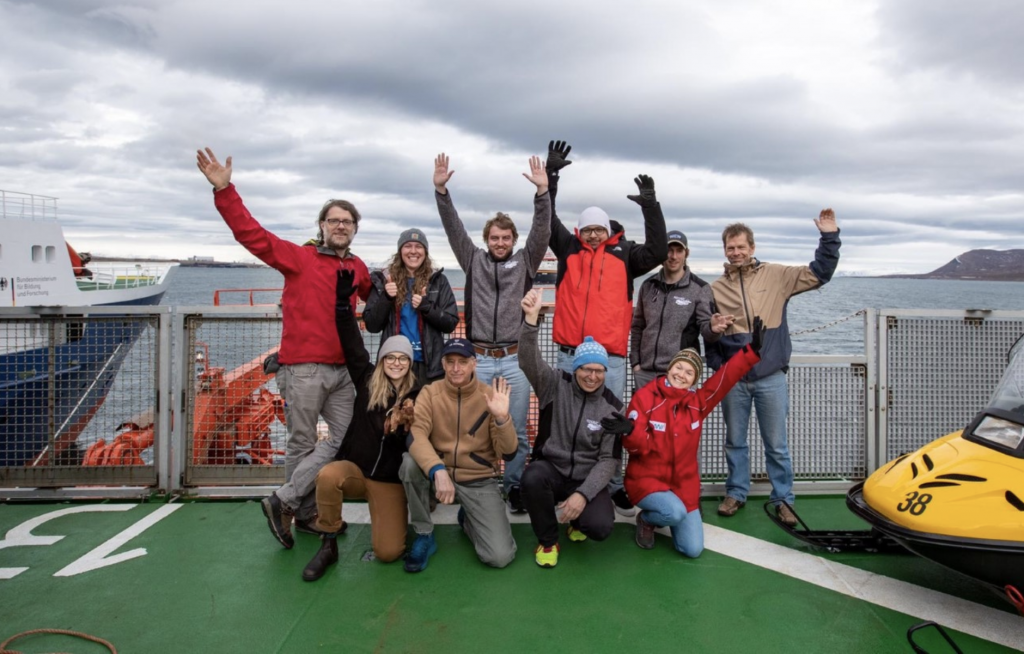by Matthew Shupe, CIRES/NOAA scientist and co-coordinator of MOSAiC
As we wait here…. For an excruciatingly long time to rendezvous with Polarstern, there has been some moderately good news. The sea-ice melt season has started out at the MOSAiC floe. I wish we were there with the full arsenal of observations and samples. That’s the overriding disappointment of this time. But we are still kind of there. Cloud, aerosol, and radiation measurements are still being made from the ship…. And our flux atmospheric surface flux station keeps plugging along making some of the most interesting observations from MOSAiC to date. Yesterday Chris [Cox, NOAA] sent some plots of the data over the past week, and I was able to also pull in Don [Perovich, Dartmouth]’s ice mass balance buoy data. Together these tell the ice’s story at this crucial time of year. We’ve observed the surface skin temperature oscillate up and down over the past weeks, as pulses of warm air periodically move in over the ice pack. These pulses protrude down into the snow and ice below and slowly over time warm the inner ice. A lot of this variability in temperature has been driven by the clouds and their blanketing effect on the surface. But we now also have the emerging sunlight as the sun continues to get higher in the sky. This trifecta of forcings on the surface – warm air advection, cloud radiation, and sun – all acting to warm the snow and ice. On May 25 these factors all came together as warm air flowed past us in Svalbard and up over the ice pack to the MOSAIC floe. This pushed the surface to the melting point, where it then must stay fixed as the surface goes through its melt process. Being stuck at the melting point temperature means that the surface has a limited ability to respond to warming. It can only emit a set amount of radiation to the atmosphere (emission is proportional to the 4th power of temperature). Thus, any increasing radiation reaching the surface from the warming, cloudy atmosphere above cannot be compensated by more radiative cooling from the surface. Additionally, with warm air above, any turbulent mixing near the surface will just bring more heat down from above. This whole process is amplified as the snow melts and becomes less reflective. This means that even a higher fraction of the sunlight will now be absorbed by the surface. And of course the ocean below is relatively warm such that it continues to warm the ice from the bottom as well. With so much heat converging on the surface, already at its melting point, and no effective mechanism for removing that heat, the excess heat causes melt. So from May 25 up through the latest data we have, the surface has been melting. This heat at the surface is also pushing down through the ice, converging with the ocean heat from below. The ice is moving rapidly now towards an isothermal state where the temperature is approximately fixed at the melting point throughout the ice. In the days to come, the regional atmospheric flow is forecasted to turn around, drawing air across the Central Arctic ice and towards our MOSAiC floe. This process will likely bring cold air that will again allow the surface to cool. But the question is: Will this be enough to reverse the melt, or will our floe carry on into the continuous melt season?


